These are photos from Camp Monticello in Monticello, AR. Photos and descriptions are courtesy of Michael Pomeroy.
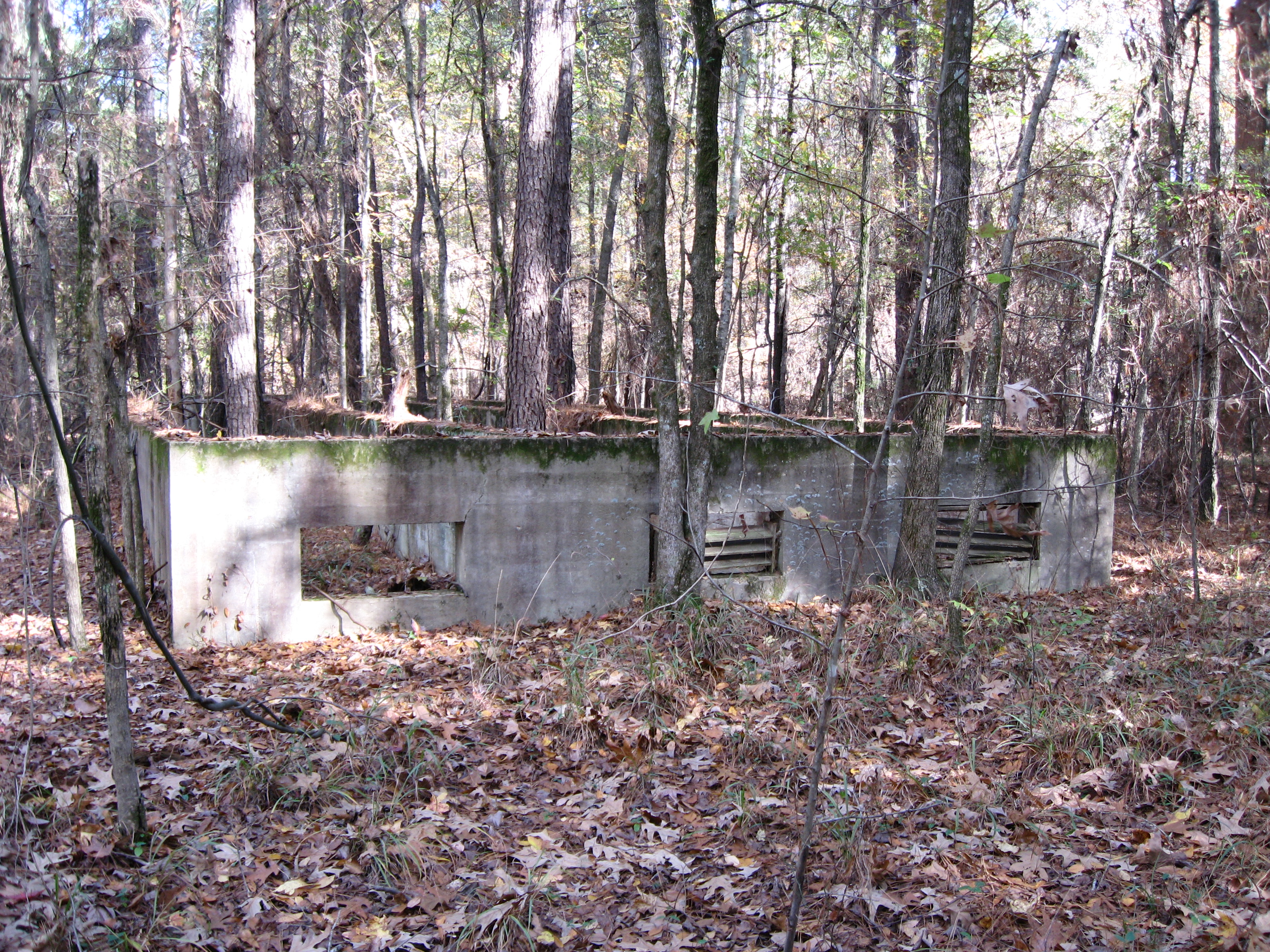

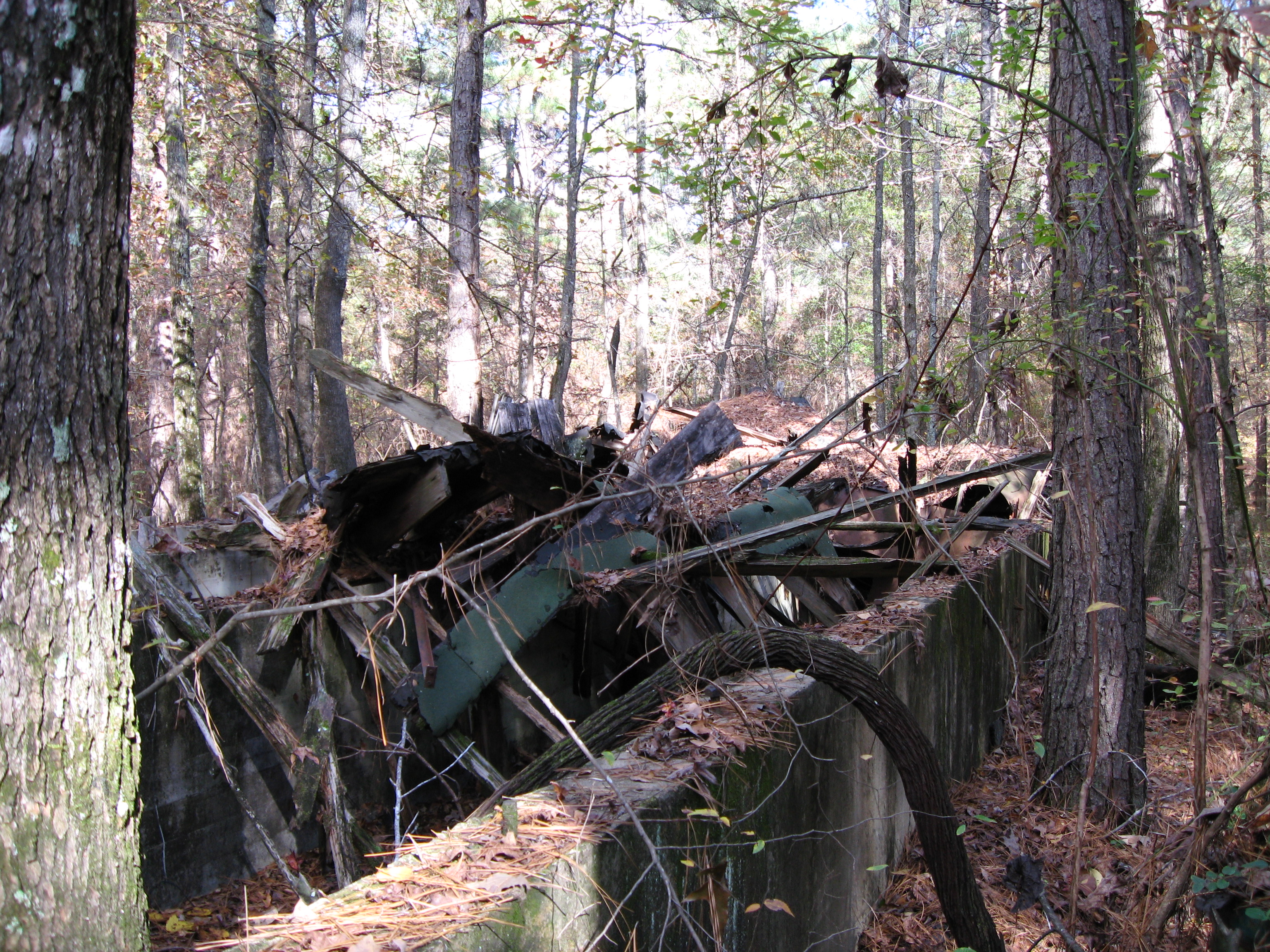
First photo the remaining foundation of T-1, third photo is the remaining foundation of T-2. In regards to the 1976 picture of T-2 (second photo), this building is actually twice as long as it appears in the photo. The back half has been torn down for the move, but the original foundation remained. Beside it stood the indentical T-1. Mr. Pomeroy believes that T-2, along with T-1, were medical storage units used by Dr. Klein. If you look at the picture from the building interior, you'll see an office on the left, a counter right in front, and open space in back. The floor plan fits a use as a supply building. Since the shape of the hospital roughly resembled a series of "T's"(TTTTT), Pomeroy believes George mistook this building for a wing of the hospital. The hospital was completely gone by the time he was exploring the camp. The building was left to rot and has since collapsed on itself. It was T-1 Pomeroy believed was moved into Monticello to be used originally as the lunchroom at the school for blacks (negroes). In the 1940's the schools in the Southern US were still segregated - meaning that Caucasian children and Black children went to separate schools and were not allowed to mix by law - which in a high part of the history of the area in itself. By 1970 though, these laws had been struck down by the US Supreme Court as being in violation of our constitution and all segregated schools were ordered to combine. When Monticello combined their black and white schools, they made use of the old black school as their Junior High School. Those building were used for about 10 years until the new school was built, even though all of the buildings were in bad condition by then. While attending that school, pomeroy noticed that the lunchroom appeared to be identical to "T-2". It was the same length and width. It had the same number of windows and the same size windows. Both buildings were actually two seperate buildings placed end to end with no door connecting them. The only thing missing was the wooden vent seen at the top of T-2 from the 1976 picture. He mentioned this to the school principle and he promply produced an old picture of the lunchroom clearly showing identical wooden vents on top. Those had been removed at some point when the roof was replaced. He also asked one of the older teachers at the school what he remembered about the building and he partly confirmed that the building was from the camp. He actually thought it came from Rowher, but he was not certain. That did not make sense due to the fact that Rowher was appoximately 30 to 40 miles away, and Camp Monticello was about 3 miles away from the school.

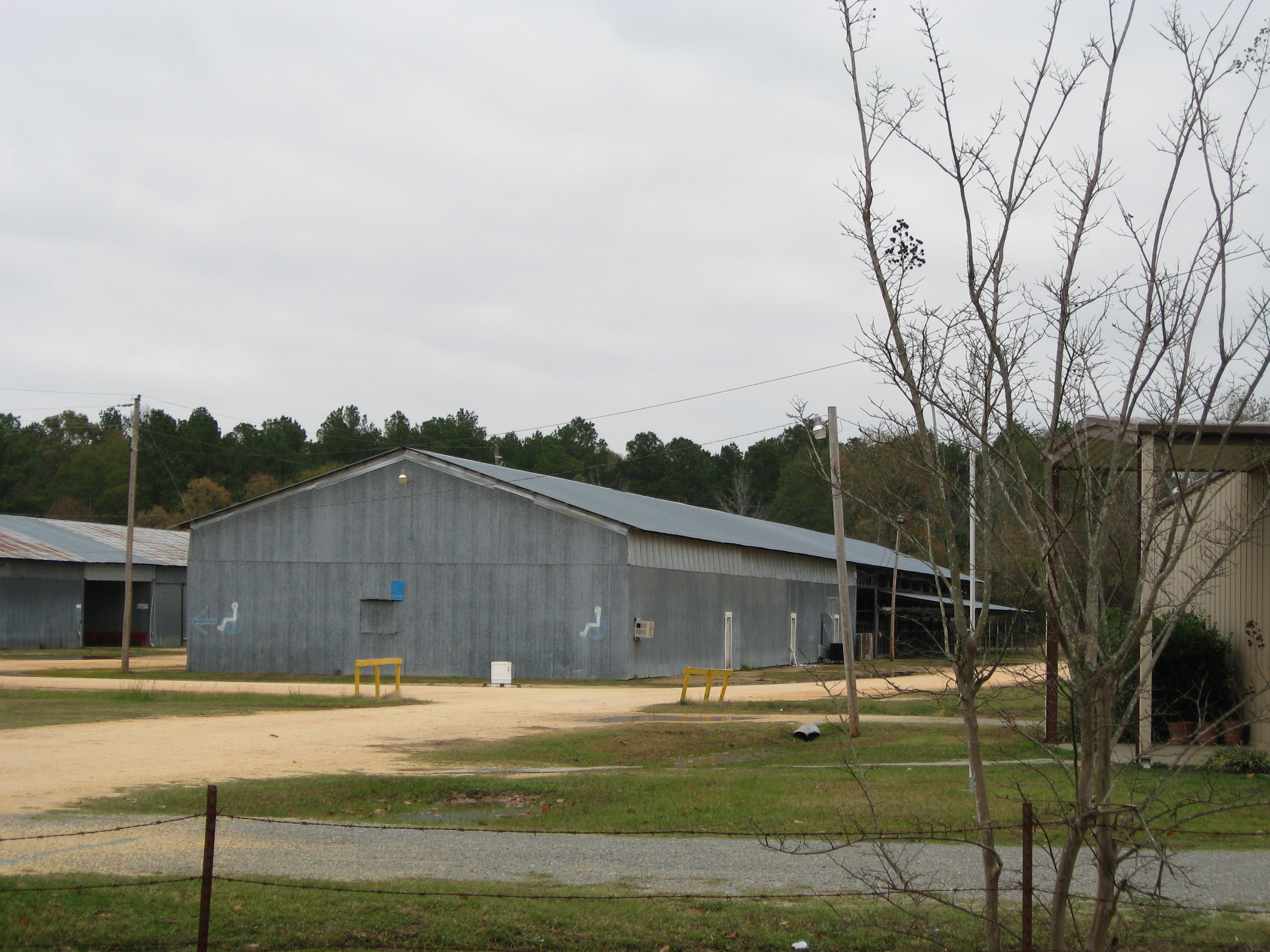
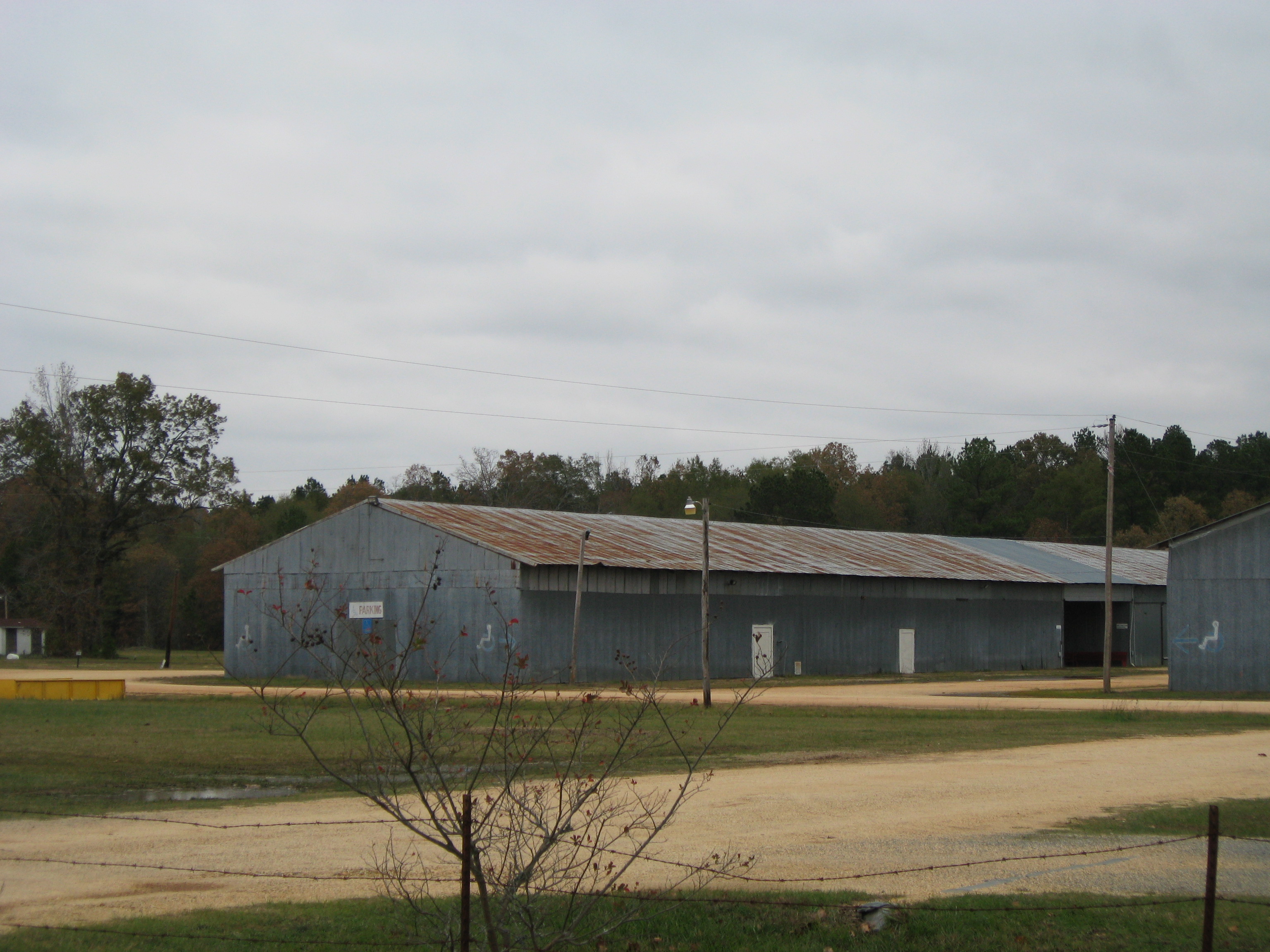
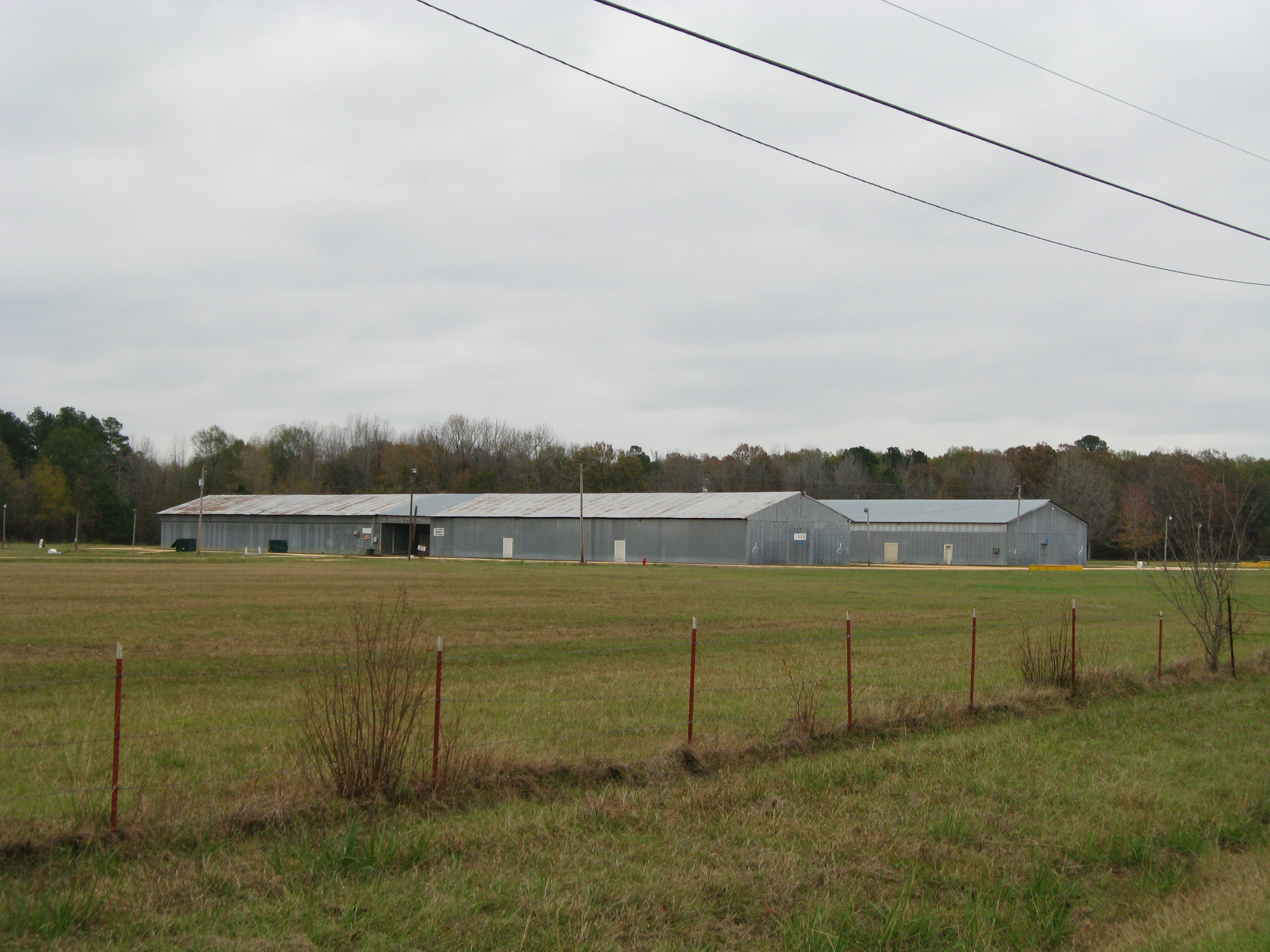
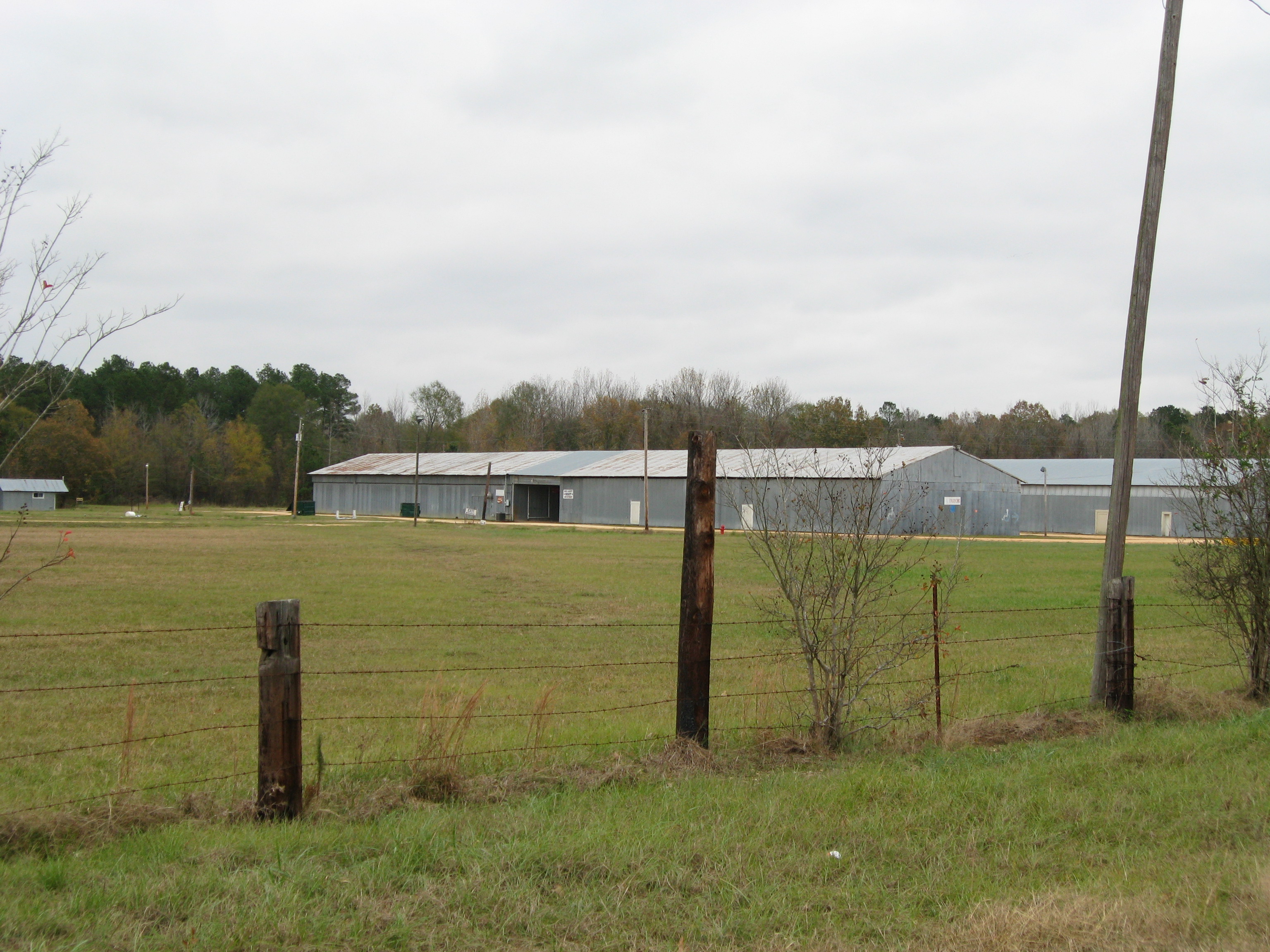

These pictures are of the Quartermaster buildings. They are still in use, though the old wooden lap siding has been covered with tin siding.The open area of the Quartermaster buildings was the loaction of the motor pool during the war. Fourth and fifth photos are from the highway showing a different angle of the Quartermaster buildings. In the fifth photo, my Pomeroy is standing at the point where the railroad spur ran underneath his feet through the center of the picture and ended at the Quartermaster buildings. It was in one of the buildings closest to the camera that George Sherry would participate in processing the arriving trainloads of POWs. He was primarily a clerk and worked mostly out of the Headquaters building, but he would move to the Quartermaster buildings whenever a train arrived. Part of his responsibility was to fingerprint the new arrivals, but few of these were used for the original POW ID cards. The fingerprints made by George Sherry were compared with the POW ID cards to make sure none of the POWs hade tried to switch identities. This system kept them from having to rely on photos and height/weight descriptions alone. Once the identity was confirmed, the receipt of the POW at Monticello was registered on the POW ID card. The sixth photo was taken from across the fairgrounds, 20 yards from the guard house. The Recreation Center was located on the very left edge of the picture in the grove of trees.

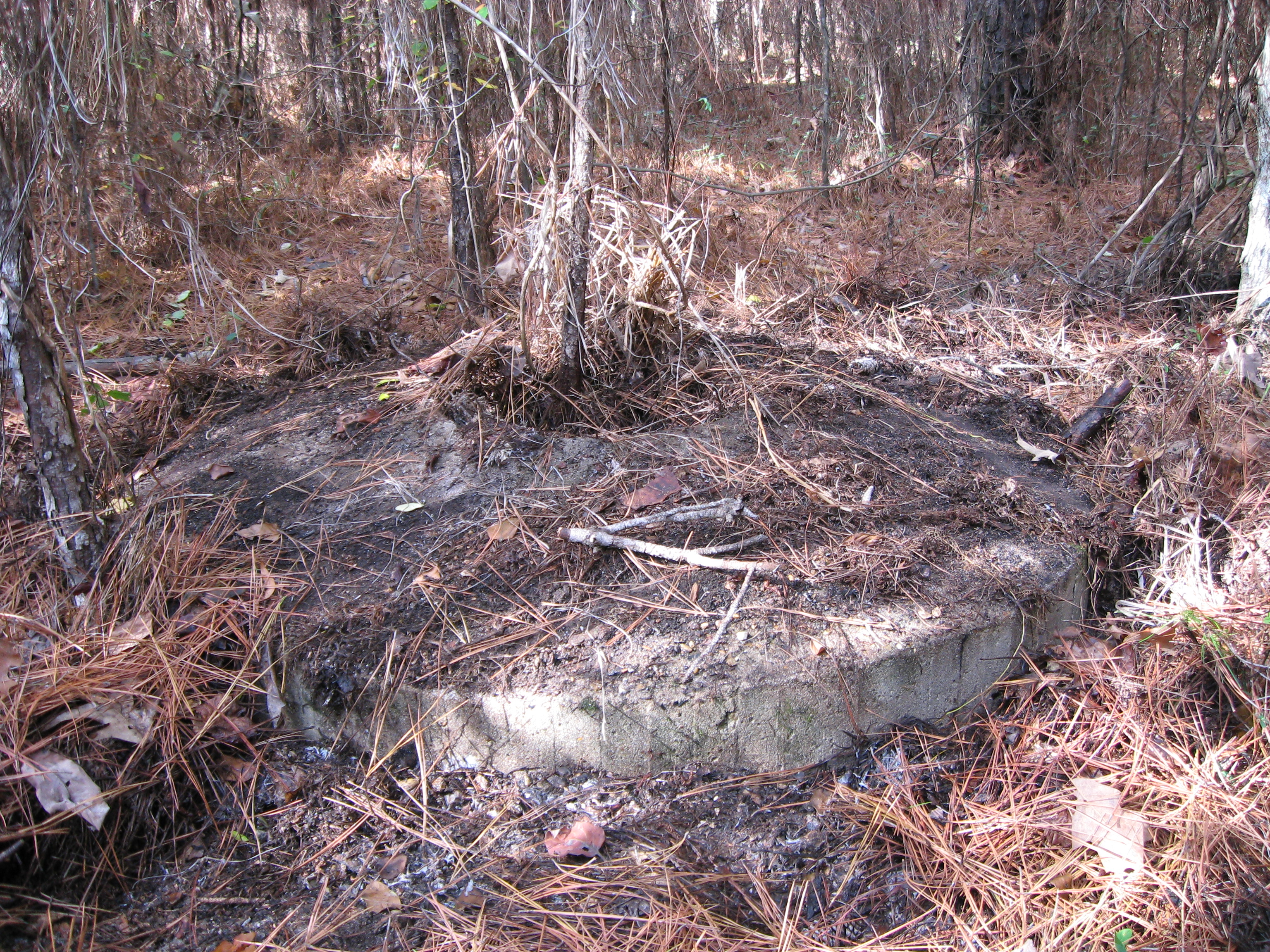
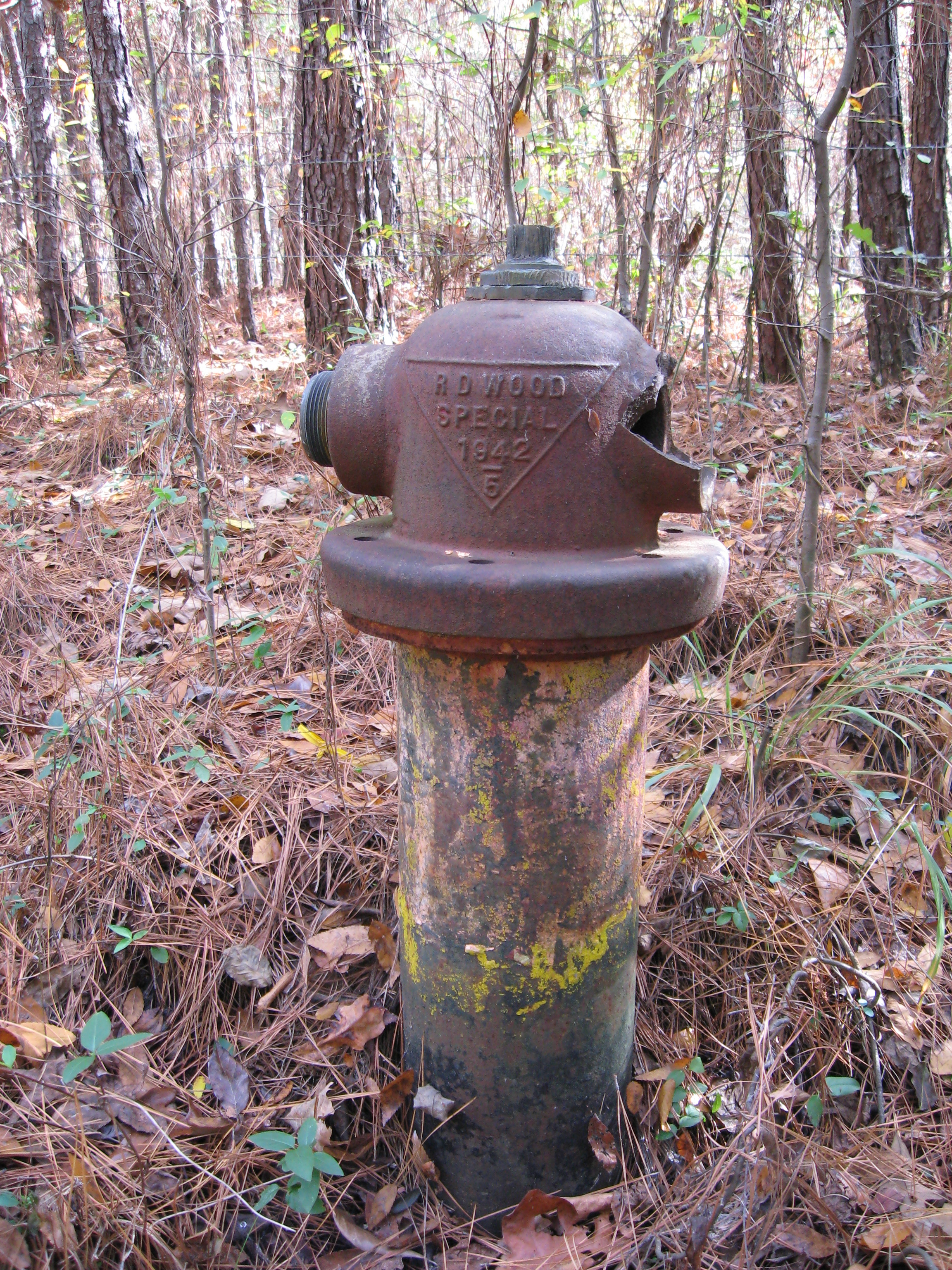
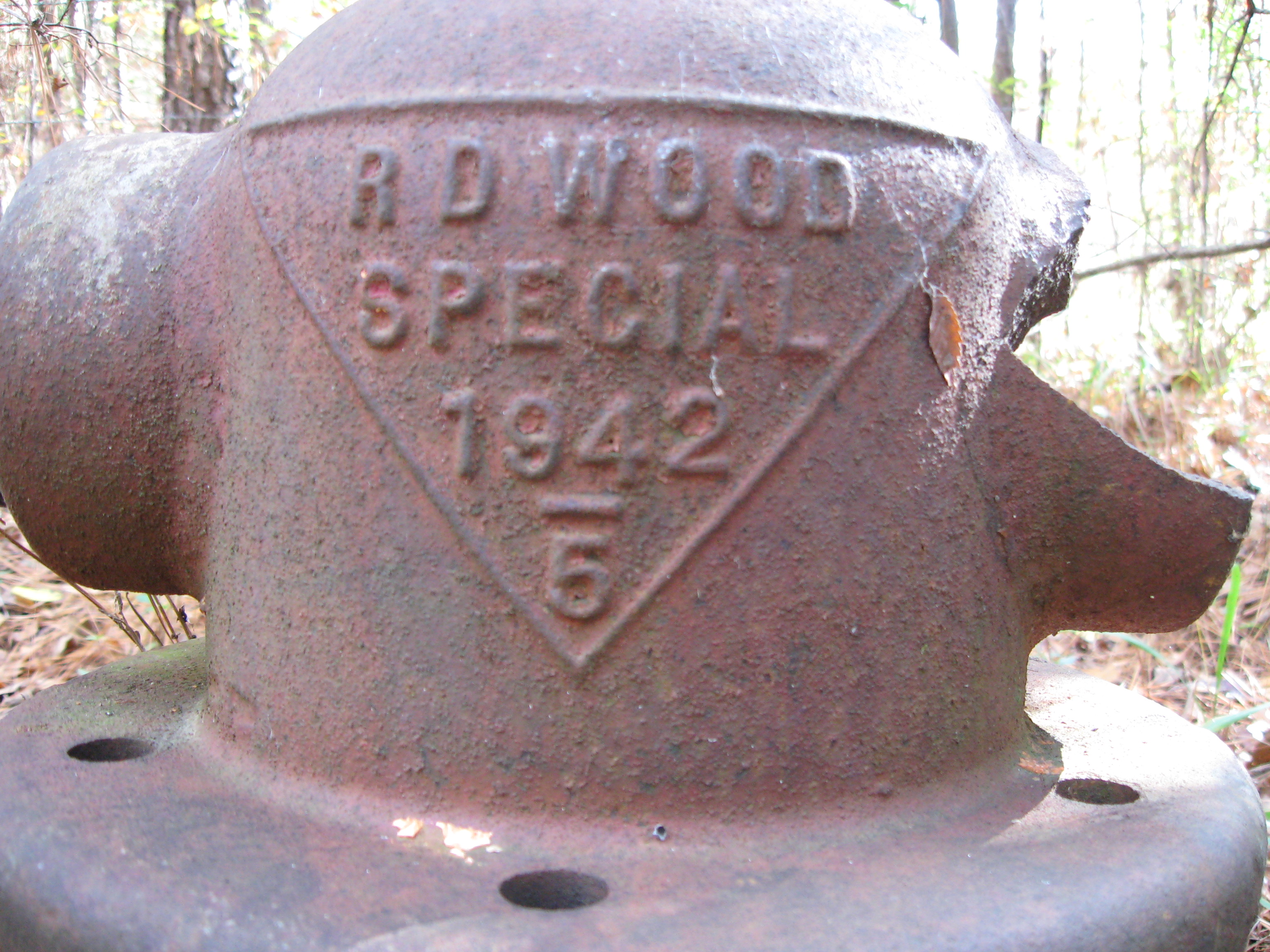
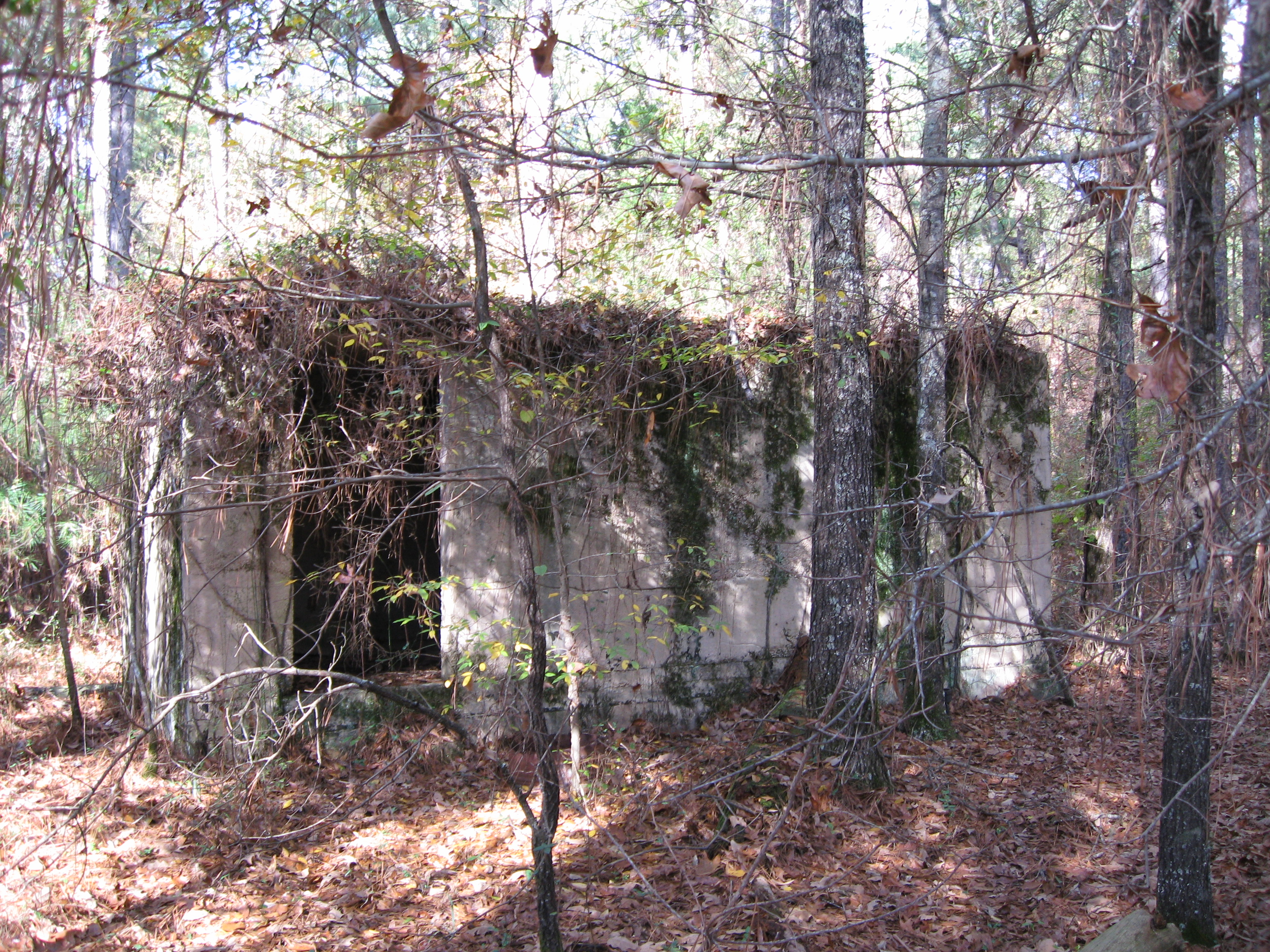
First photo in of an unknown ruin outside the POW compunds, one of several similar foundations, though it's purpose is unknown. The buildings would have been small, about 6' by 12', with a high concrete side and single door. The concrete portion of the walls was about chest high and there would have been a wooden wall and the roof above that. There are similar foundations at the compound main gates, but they are smaller. Also, considering where they were located, it is logical to assume that they were guardhouses. Second photo is a flag pole base that marks the location of the Headquarters building. It's surrounded by a concrete walkway, though it's hard to see with the leaves and under-brush. This was the place where the bugler sound the end of the day as the flag was lowered. To find this, Pomeroy had to first find the "bunker", then look beside it to find the "bump" in the leaves and underbrush. It was complete covered with forest reside when he found it and he would have missed it if he haden't known where to look. Photos three and four are of a fire hydrant that sat across from the Headquarters building. It's broken so it was left behind when most of the water pipes, fireplugs, etc. were dug up after the war and reburied at the University campus during the 1950's. Fifth photo is on a "bunker" that was located in the headquarters building, though it's original purpose is unknown. Mr. Pomeroy thinks it was used as a fire-proof storage for vital records.
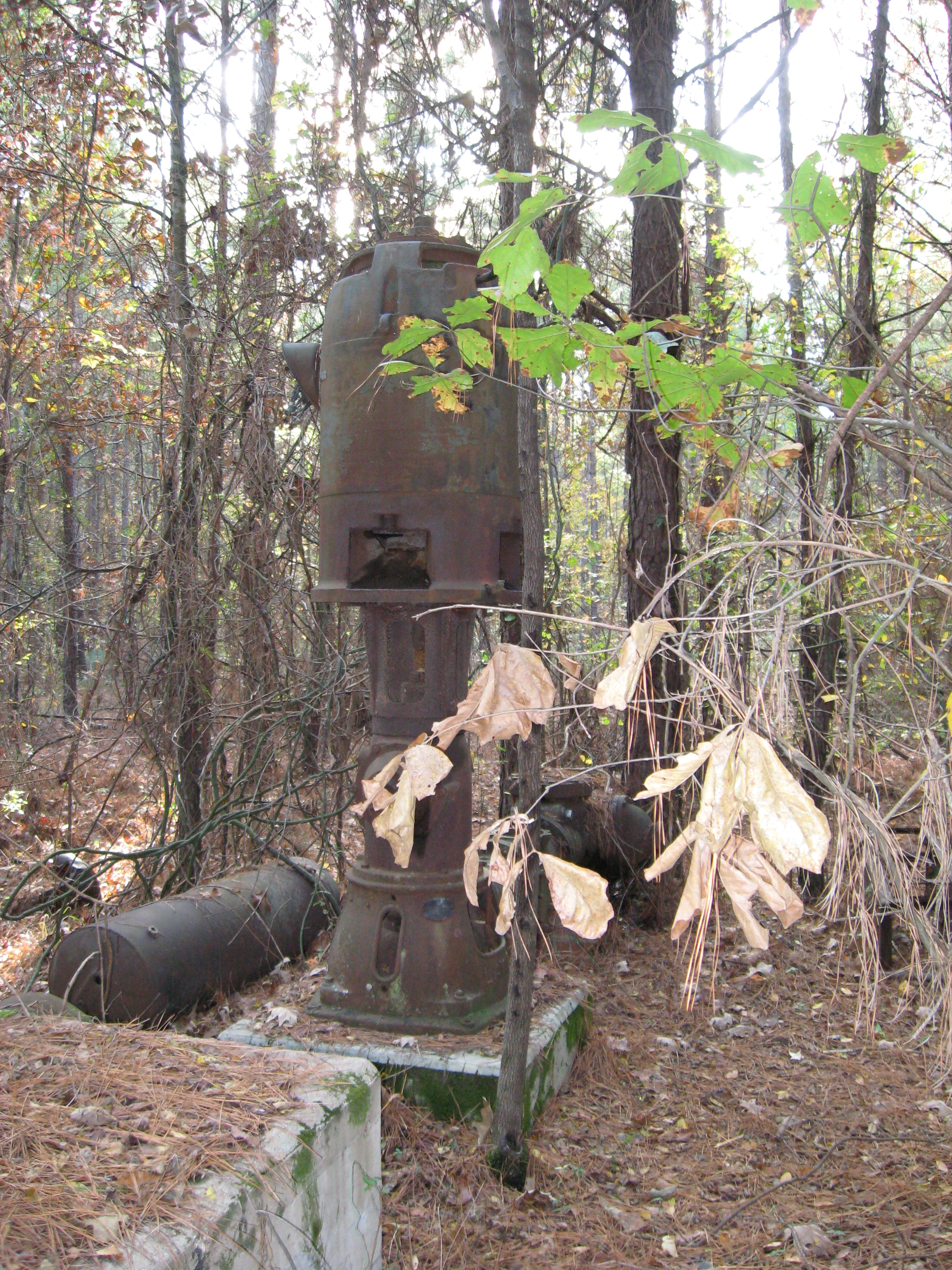
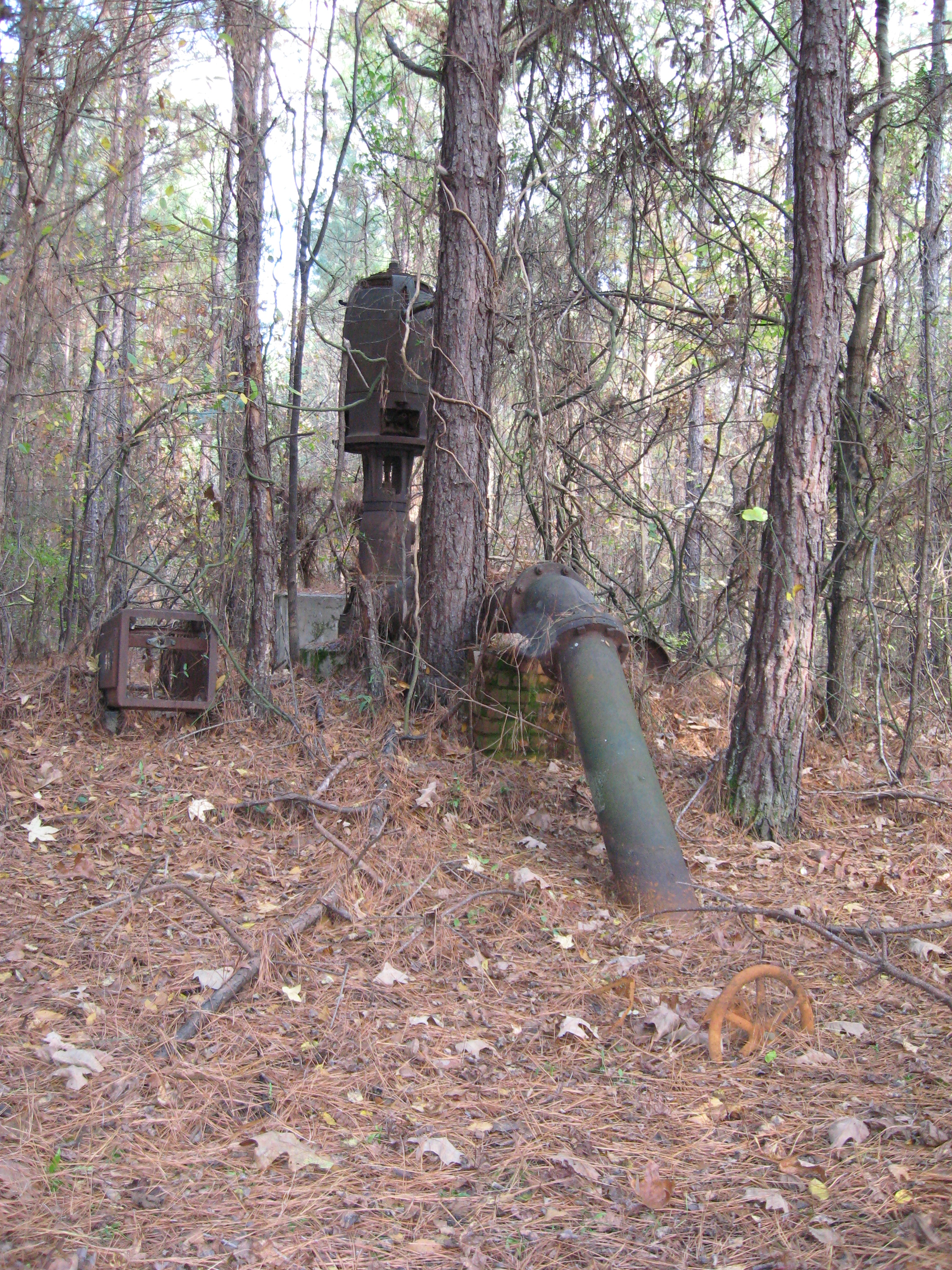
These photos are of the pumping station at the camp.
Links to other sites about Prisoners of War in Arkansas include:
